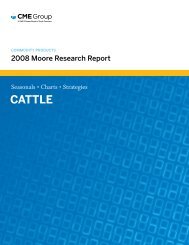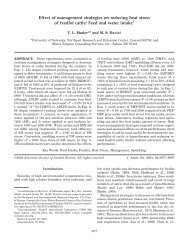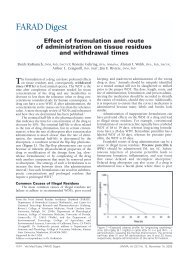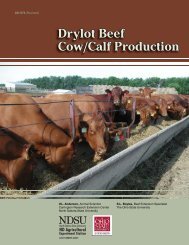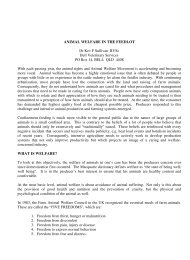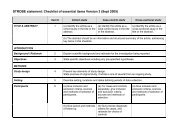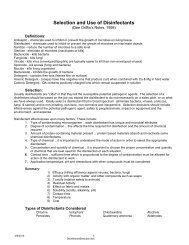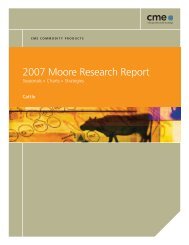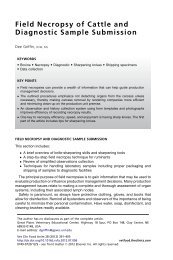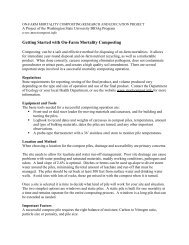CRIMES WITHOUT CONSEQUENCES - gpvec
CRIMES WITHOUT CONSEQUENCES - gpvec
CRIMES WITHOUT CONSEQUENCES - gpvec
Create successful ePaper yourself
Turn your PDF publications into a flip-book with our unique Google optimized e-Paper software.
enforCement of federal laW in u.s. Plants<br />
An analysis of the 432 NRs supplied by the FSIS revealed a total of 501 humane<br />
handling or humane slaughter violations at 229 plants. 102 The types of violations cited<br />
are summarized in Table 11. Although most records documented only one violation, in<br />
some cases multiple violations were noted. Moreover, nearly 40 percent of the NRs noted<br />
multiple instances of a violation.<br />
Water in pens<br />
The most commonly cited humane handling and slaughter deficiency at federally<br />
inspected slaughter facilities was the failure to provide water to animals in holding areas.<br />
Federal regulations state: “Animals shall have access to water in all holding pens and, if<br />
held longer than 24 hours, access to feed.” 103 Following are examples from federal NRs<br />
of failure to provide access to water:<br />
•<br />
•<br />
•<br />
Out of 22 bison and 1 beef steer, the steer and nine of the bison were without<br />
water and had no access to water. The bison had a barrel that had been cut in<br />
half for water. This barrel was covered with fecal material and slime and held a<br />
slight amount of green, slimy water. 104<br />
I noted that one of the bulls, deemed by the establishment as too large to<br />
slaughter at this facility, was lying dead in Pen 14. There were several other<br />
large bulls also in the pen. The dead bull’s eyes were sunken suggesting<br />
dehydration, and upon closer inspection, the waterer supplying water to Pens<br />
14 and 13 was found to be empty. These bulls had been held on establishment’s<br />
premises since 10/03/03. 105<br />
One pen holding animals had no water tank, one water tank in another pen was<br />
dry, and several water tanks in other pens were frozen over so animals had no<br />
access to water. 106<br />
Pens or grounds in good repair<br />
The second most commonly cited humane handling and slaughter deficiency was the<br />
failure to maintain facilities in good repair. Federal regulations state, “Livestock pens,<br />
driveways and ramps shall be maintained in good repair. They shall be free from sharp<br />
or protruding objects that may, in the opinion of the inspector, cause injury or pain to the<br />
animals. Loose boards, splintered or broken planking, and unnecessary openings where<br />
the head, feet, or legs of an animal may be injured shall be repaired.” 107 Following are<br />
examples of failure to maintain pens and other facilities in good repair:<br />
102 A list of all federal plants cited for humane violations, October 1, 2002 to March 31, 2004, is presented in<br />
Appendix E.<br />
103 9 CFR 313.2(e).<br />
104 NR issued to plant #11032M on March 10, 2004.<br />
105 NR issued to plant #00532M on October 7, 2003.<br />
106 NR issued to plant #17466M on November 12, 2003.<br />
107 9 CFR 313.1(a).<br />
41




